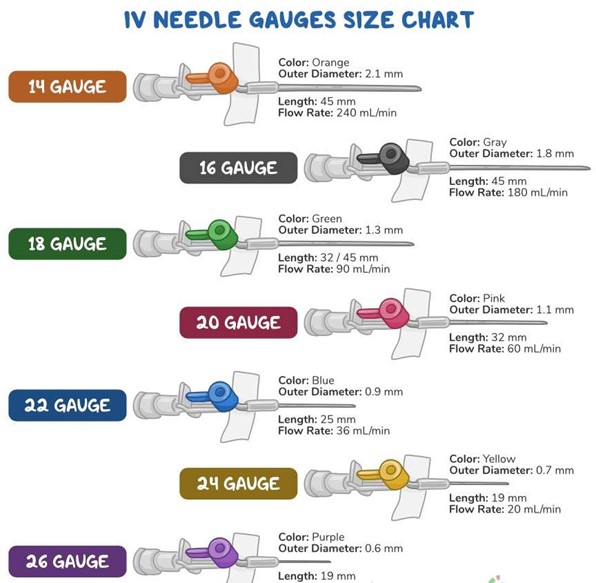A nurse is preparing to administer immunizations to a 3-month-old infant.
Which of the following is an appropriate action for the nurse to take to deliver atraumatic care?
Provide a pacifier coated with an oral sucrose solution prior to the injections.
Use a 20-gauge needle for the injections.
Apply eutectic mixture of local anesthetics (EMLA) cream immediately before the injections.
Inject the immunizations into the deltoid muscle.
The Correct Answer is A

Oral sucrose solution has been shown to have analgesic effects and can help reduce pain and discomfort in infants during procedures such as immunizations.
Choice B is wrong because Use a 20-gauge needle for the injections is not an answer because a 20-gauge needle is larger than the recommended size for infant immunizations.
Choice C is wrong because Apply eutectic mixture of local anesthetics (EMLA) cream immediately before the injections is not an answer because EMLA cream needs to be applied at least 1 hour before the procedure to be effective.
Choice D is wrong because Inject the immunizations into the deltoid muscle is not an answer because the deltoid muscle is not recommended for infants under 12 months of age.
Nursing Test Bank
Naxlex Comprehensive Predictor Exams
Related Questions
Correct Answer is B
Explanation

This is because oxygen saturation below 90% indicates that the infant is not getting enough oxygen and central cyanosis (bluish color of the skin due to lack of oxygen) is a sign of severe respiratory distress.
Both of these findings require immediate medical attention.
Choice A is wrong because cough or difficulty in breathing, while concerning, may not require immediate reporting to the provider as they are common symptoms of RSV infection.
Choice C is wrong because severe respiratory distress (e.g grunting, very severe chest indrawing), while concerning, may not require immediate reporting to the provider as they are common symptoms of RSV infection.
Choice D is wrong because signs of pneumonia with a general danger, while concerning, may not require immediate reporting to the provider as they are common symptoms of RSV infection.
Correct Answer is A
Explanation
A 24-gauge catheter is the smallest-gauge catheter and is appropriate for administering IV fluids and medications to an infant.

Choice B is wrong because an opaque dressing would prevent the nurse from visualizing the insertion site.
Choice C is wrong because starting an IV in an infant’s foot can be painful and difficult to secure.
Choice D is wrong because IV sites should be changed every 72-96 hours or according to facility policy.
Whether you are a student looking to ace your exams or a practicing nurse seeking to enhance your expertise , our nursing education contents will empower you with the confidence and competence to make a difference in the lives of patients and become a respected leader in the healthcare field.
Visit Naxlex, invest in your future and unlock endless possibilities with our unparalleled nursing education contents today
Report Wrong Answer on the Current Question
Do you disagree with the answer? If yes, what is your expected answer? Explain.
Kindly be descriptive with the issue you are facing.
